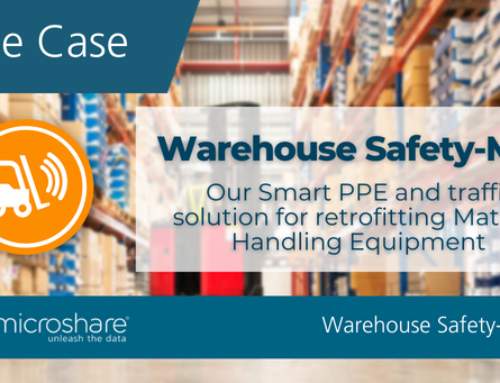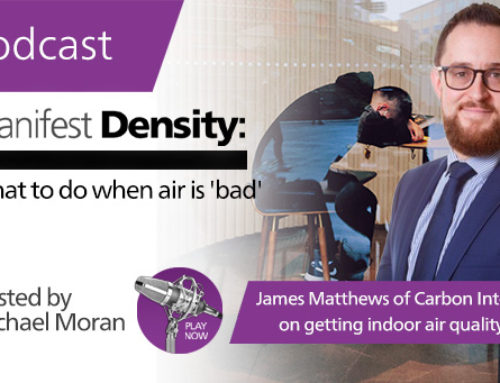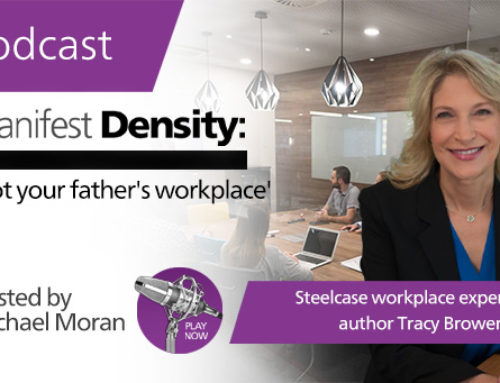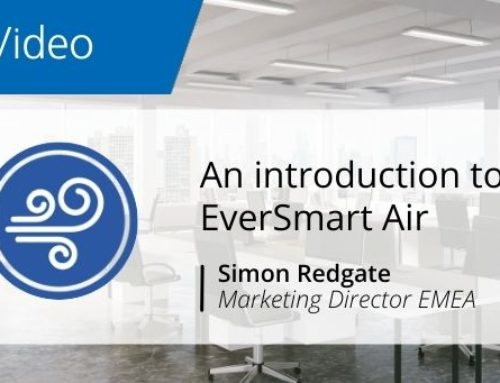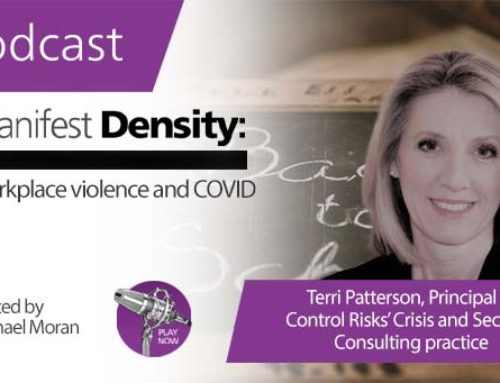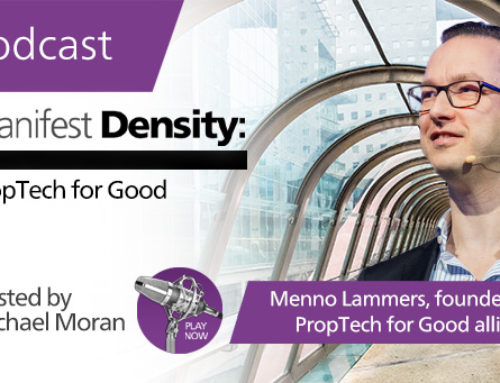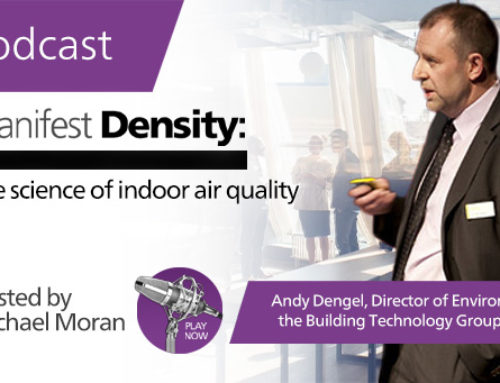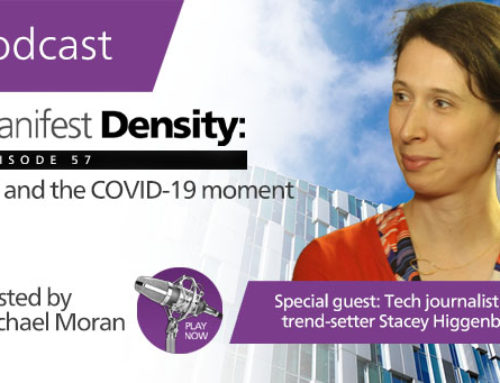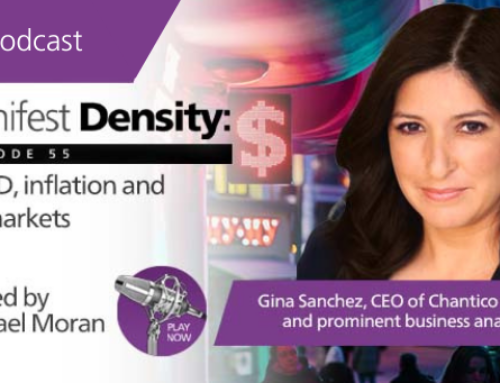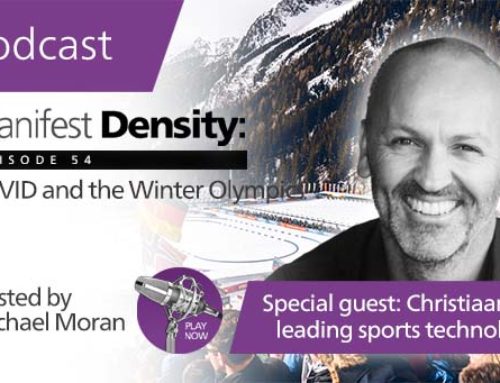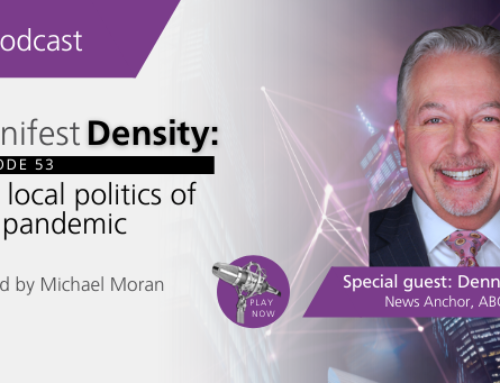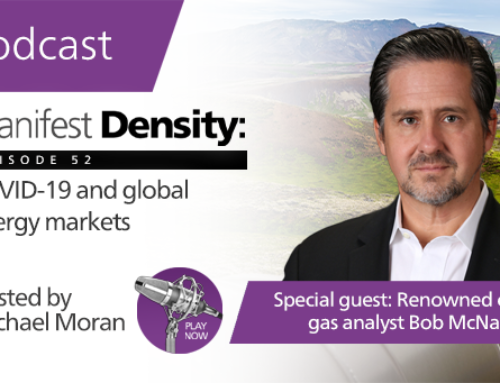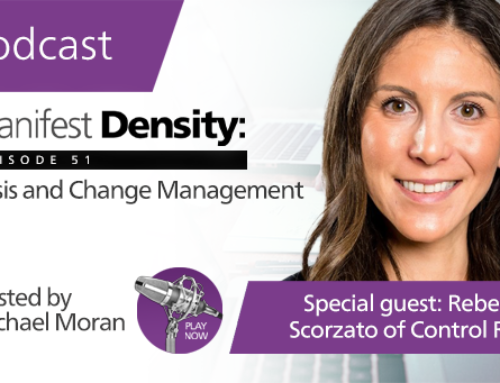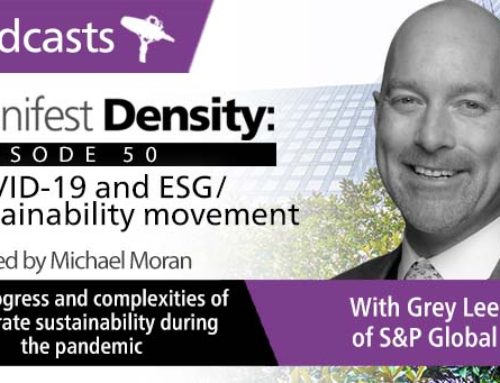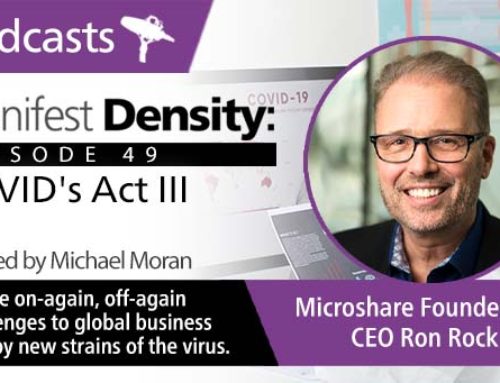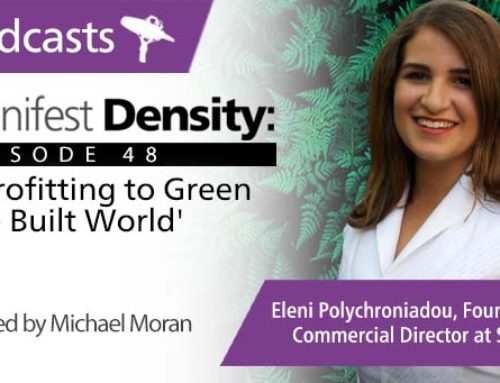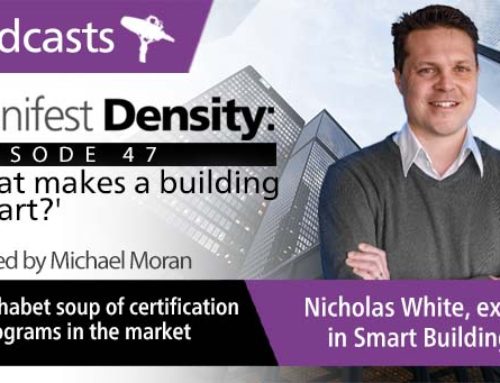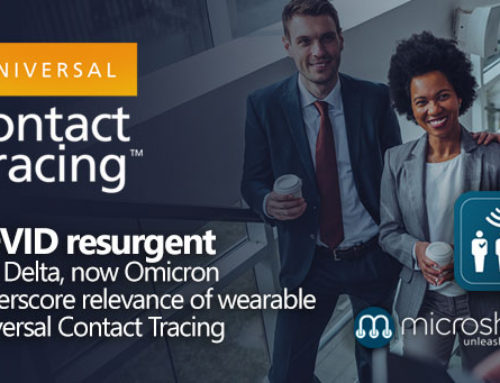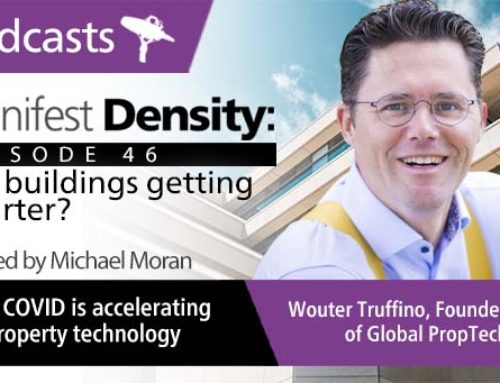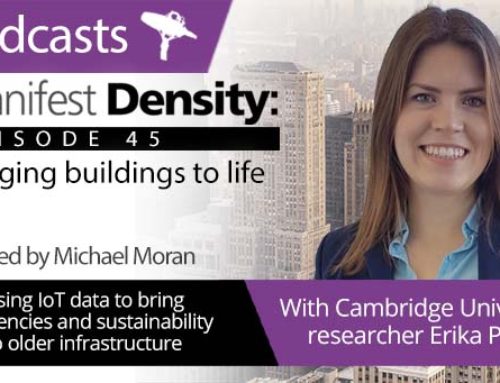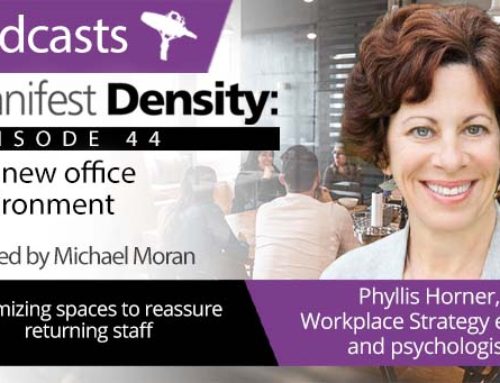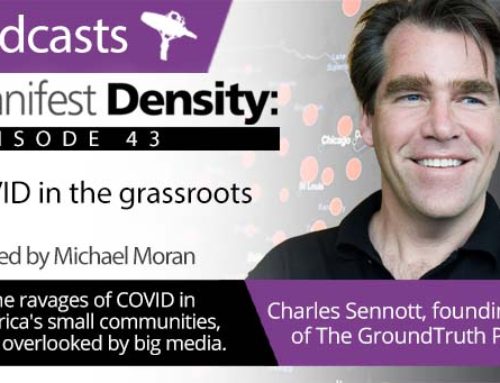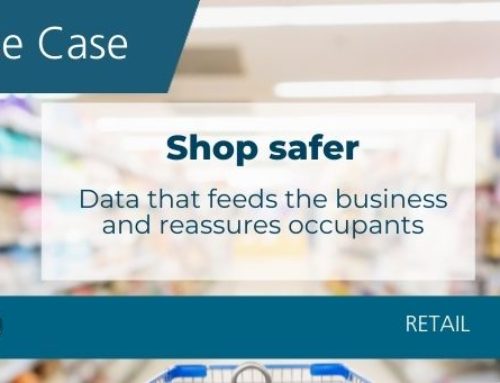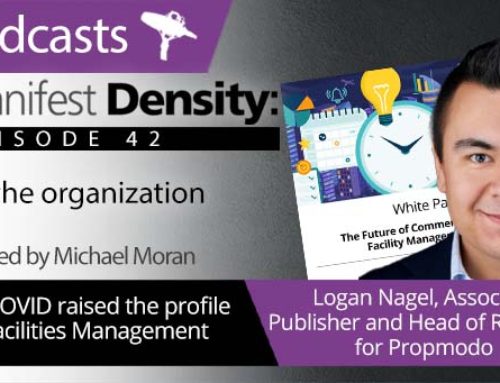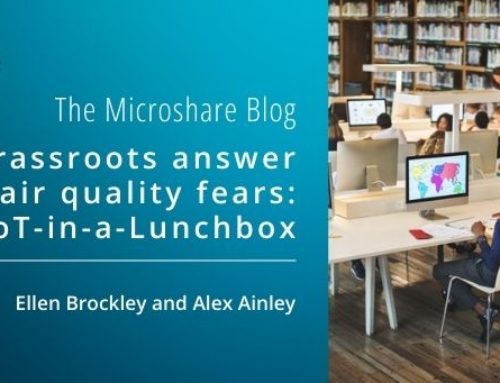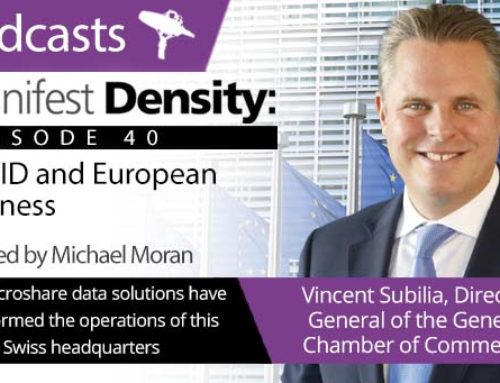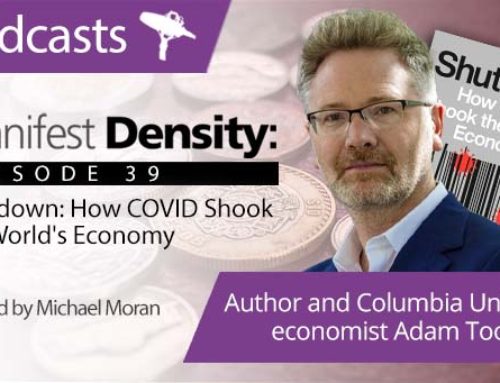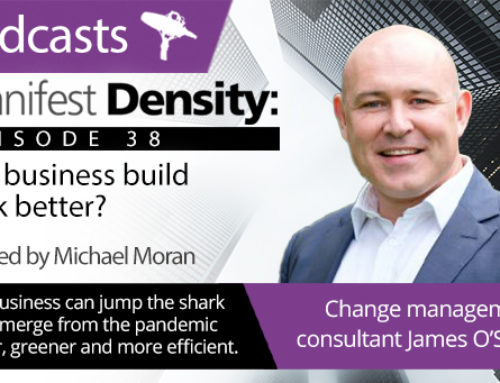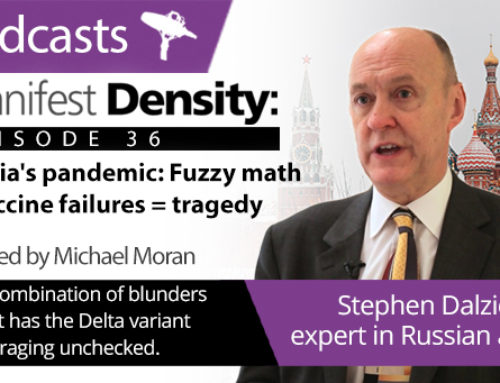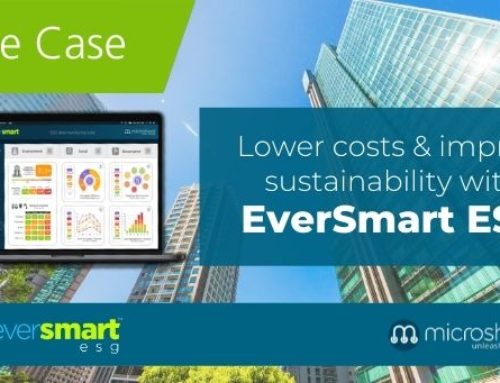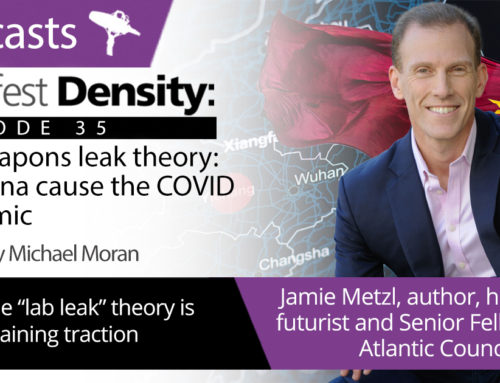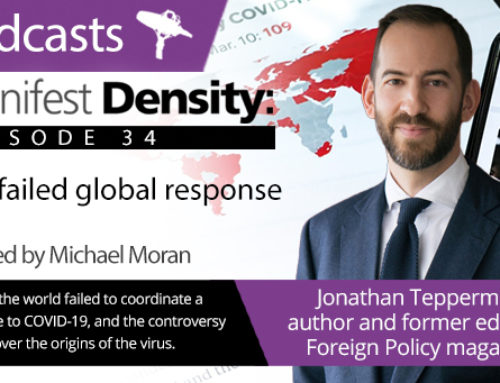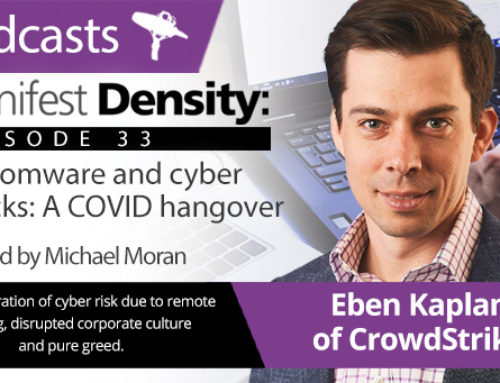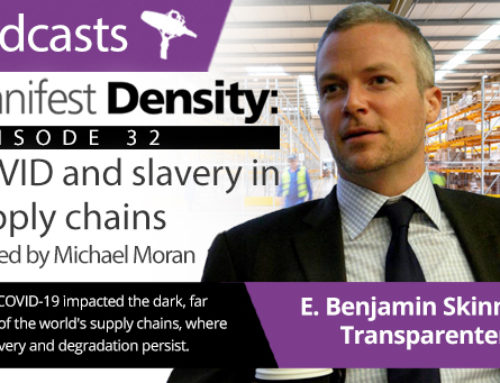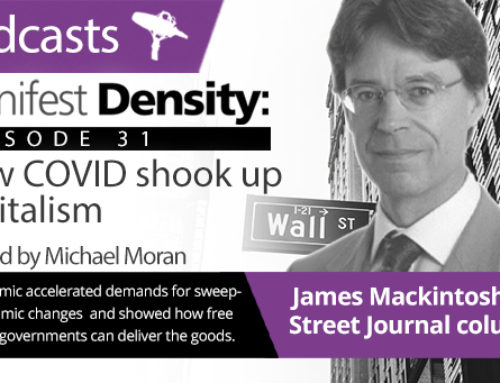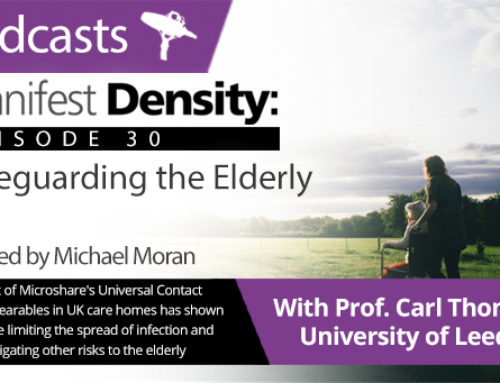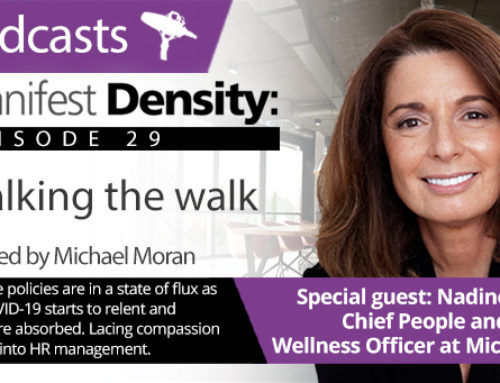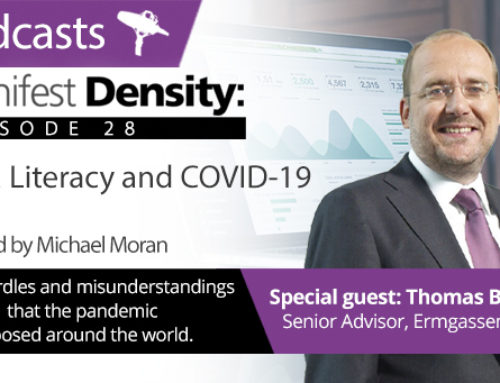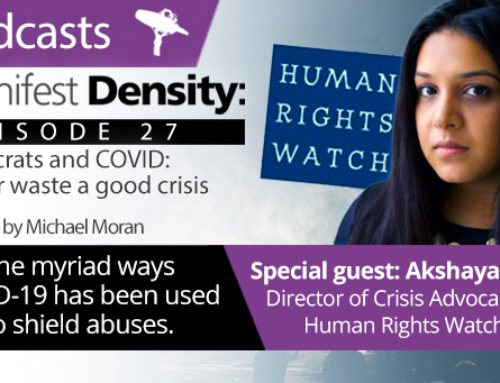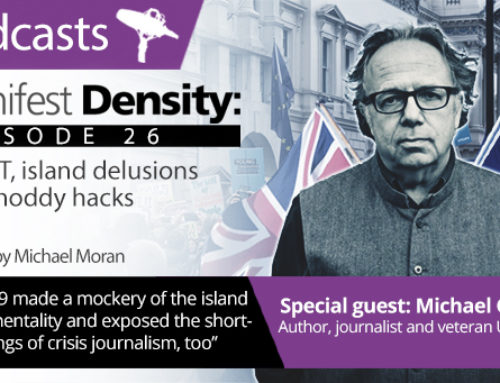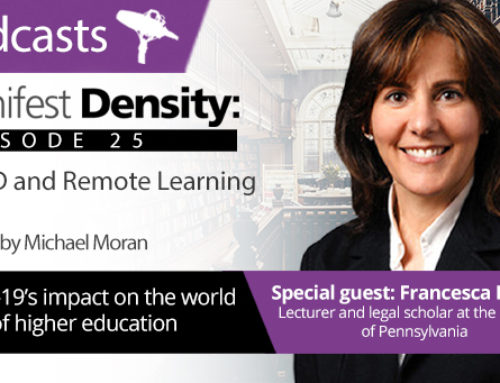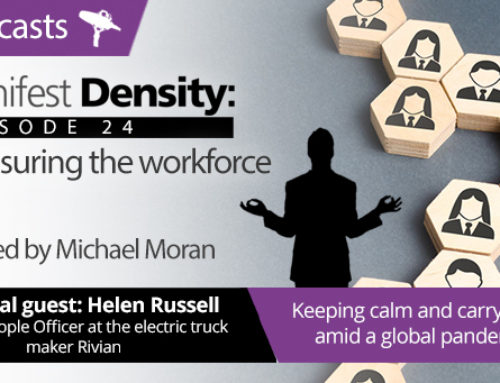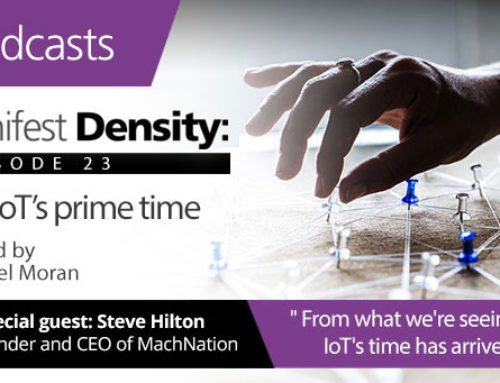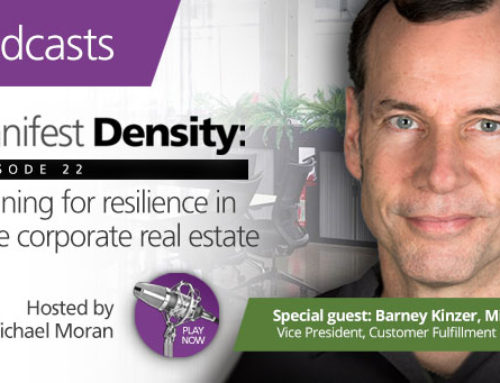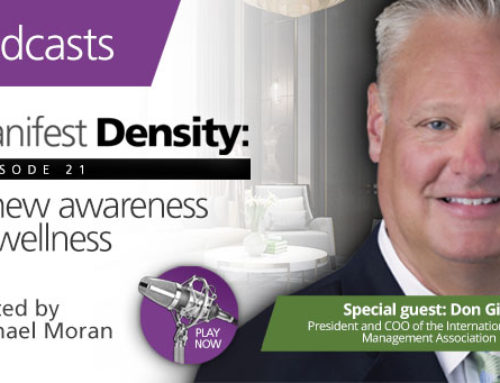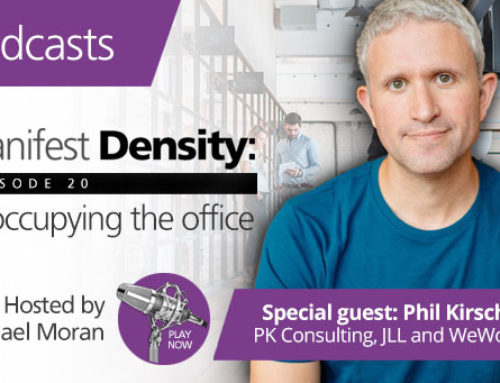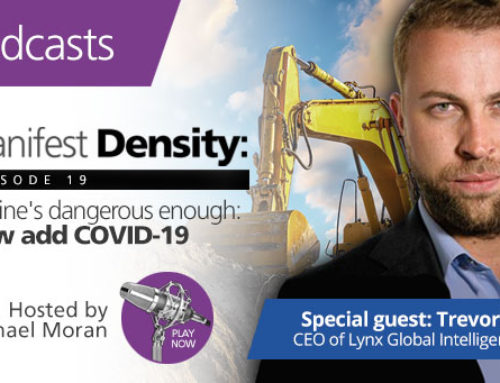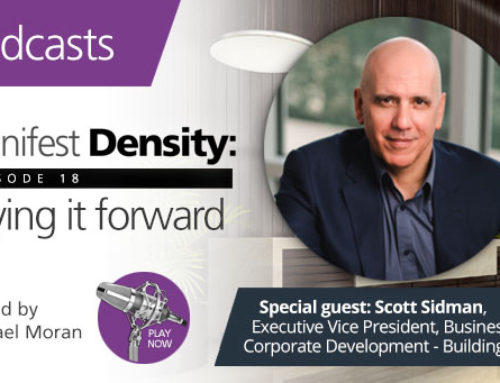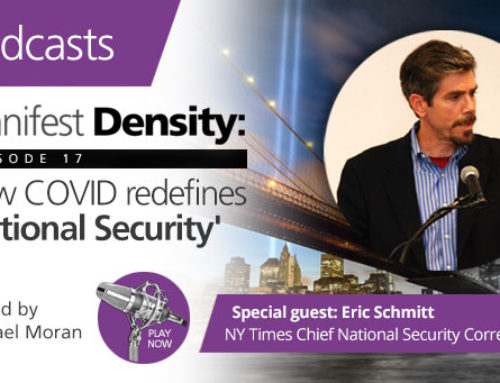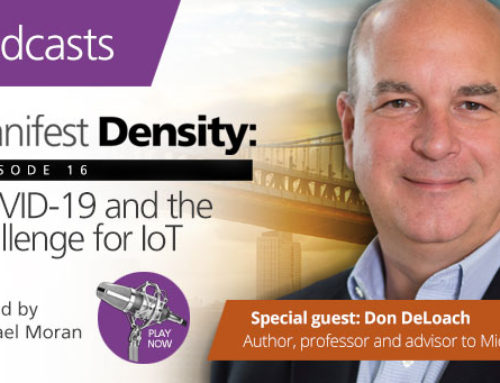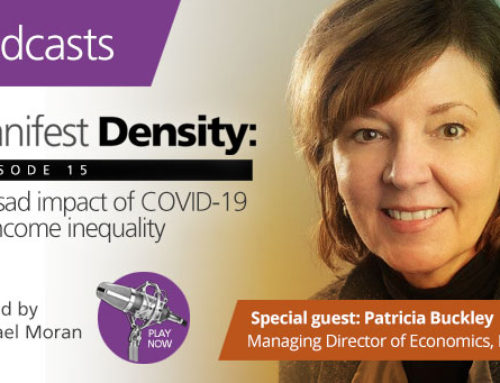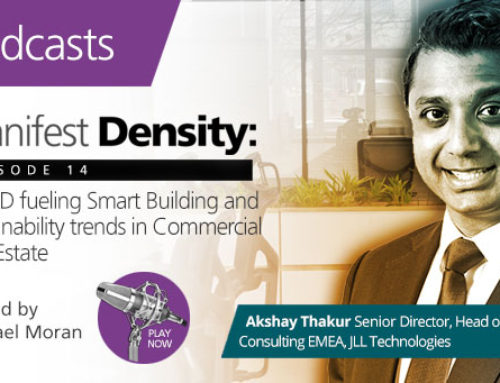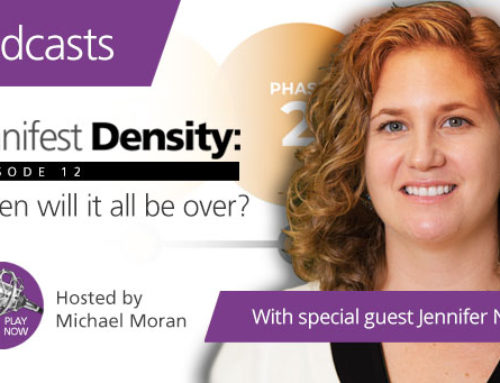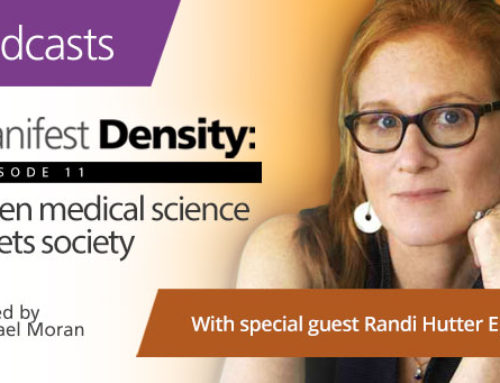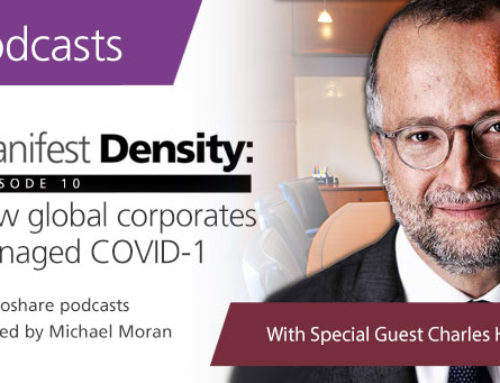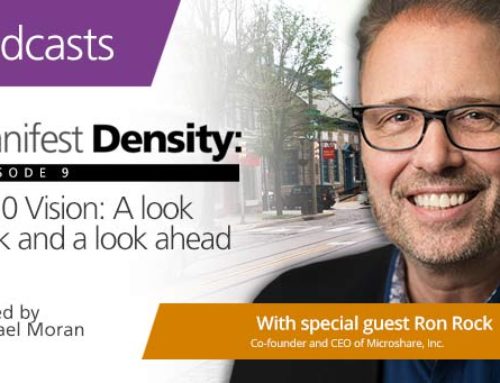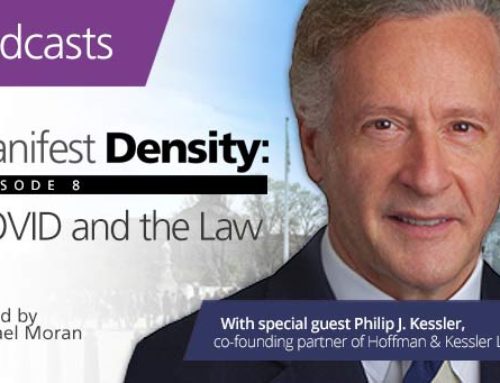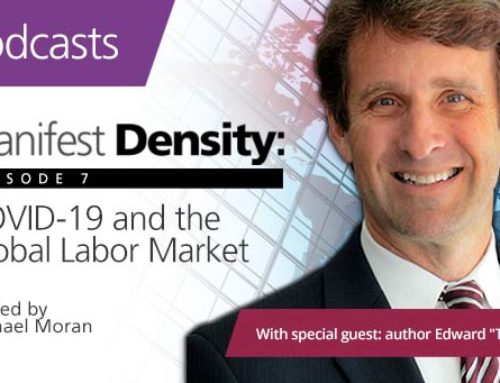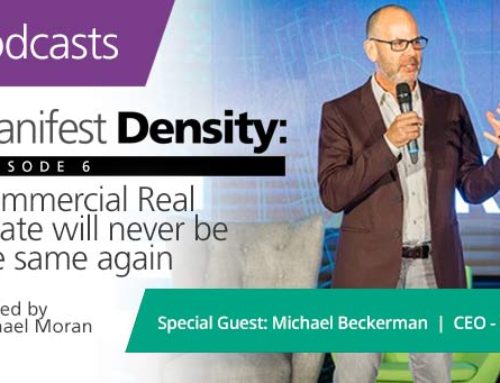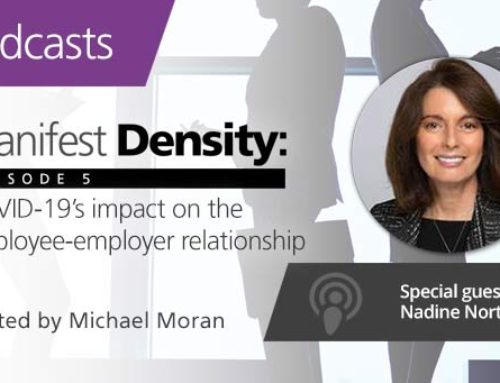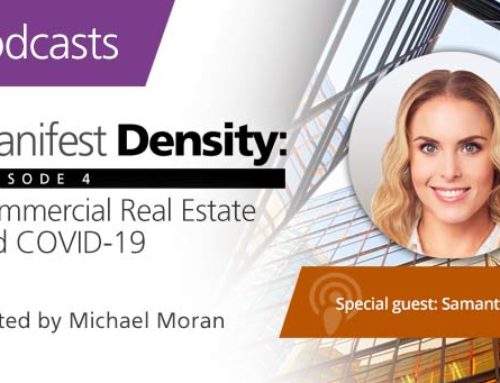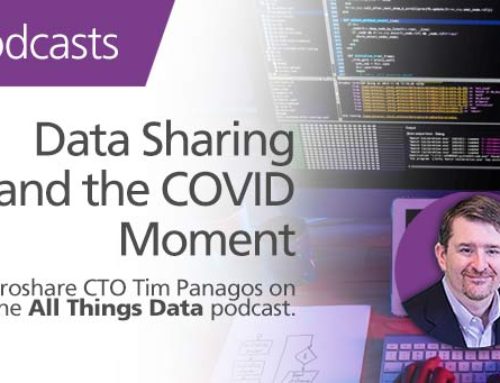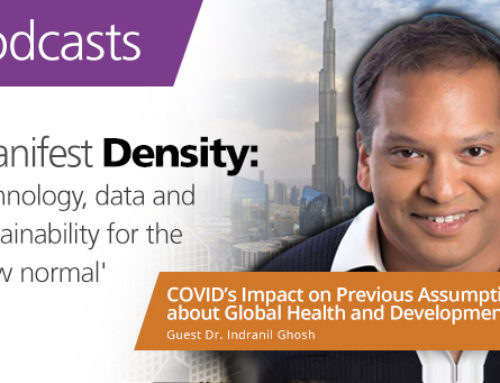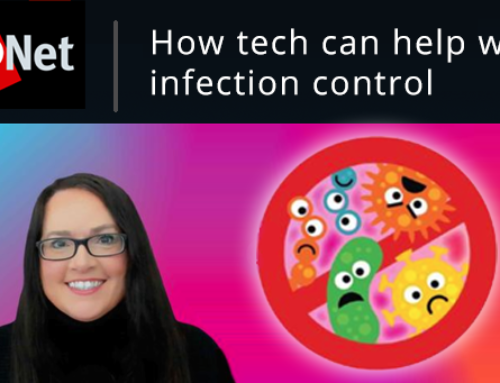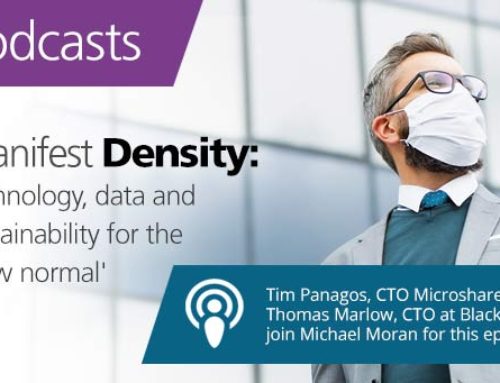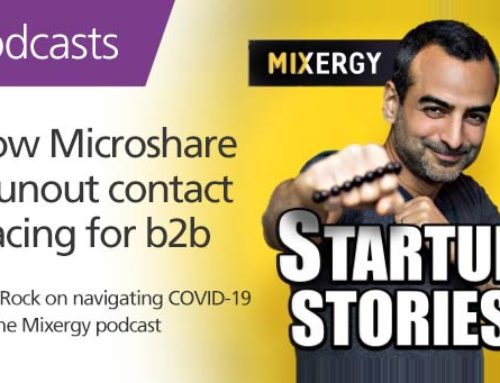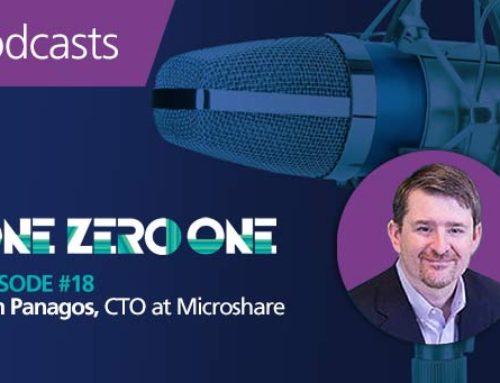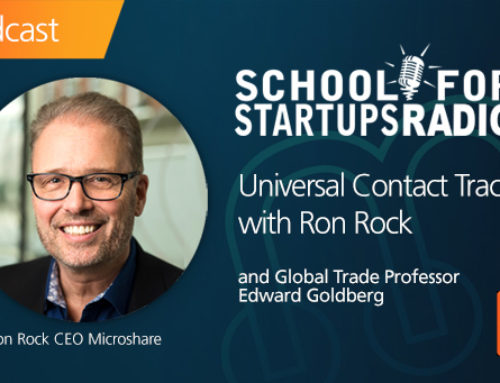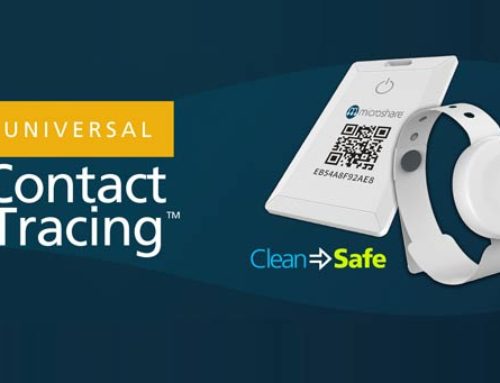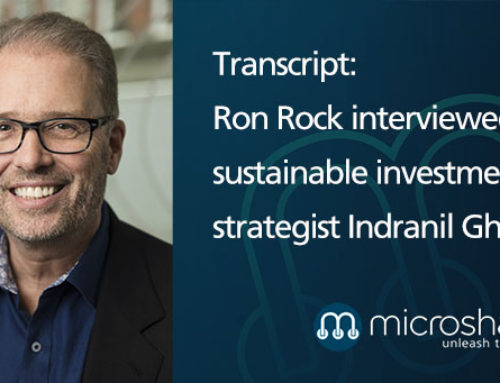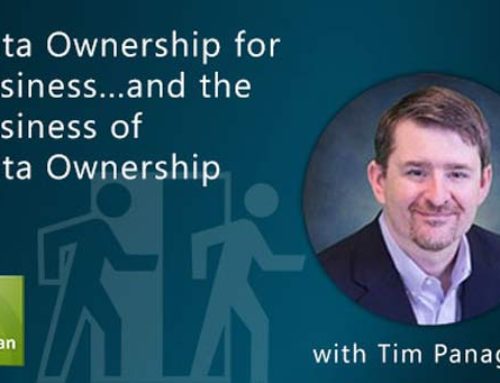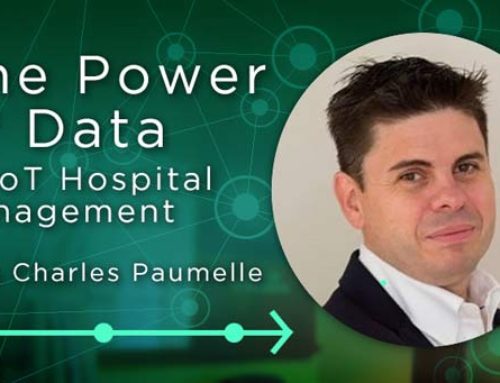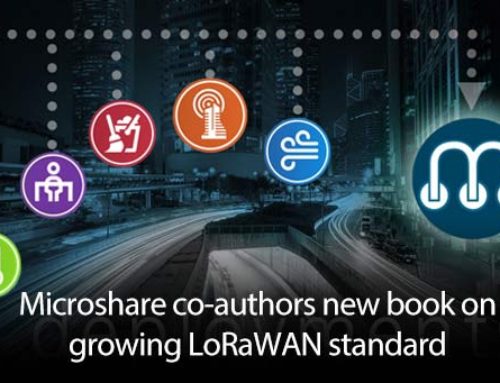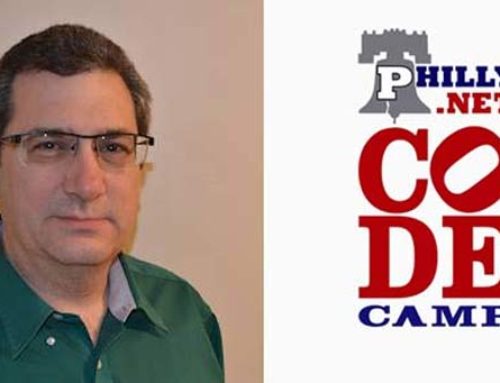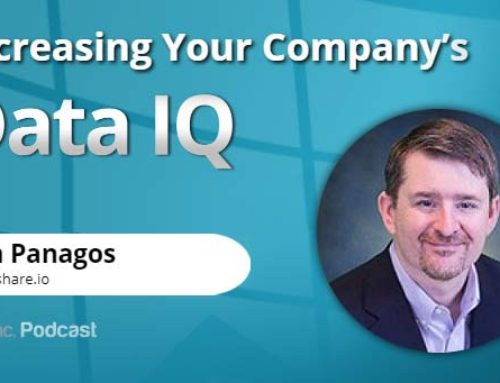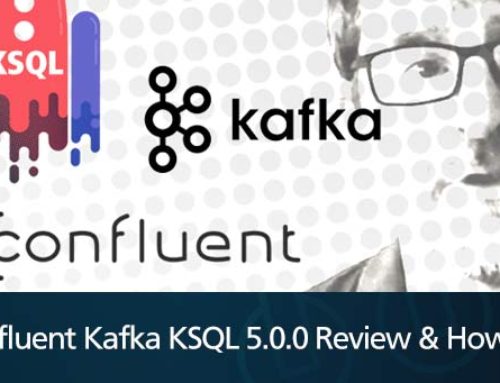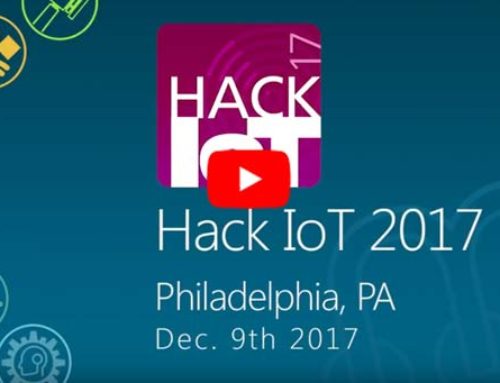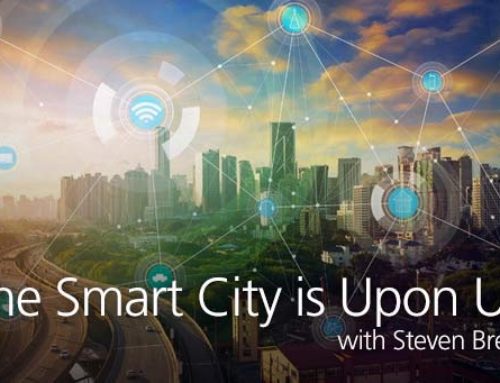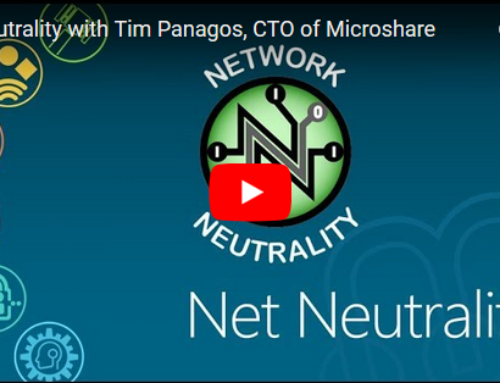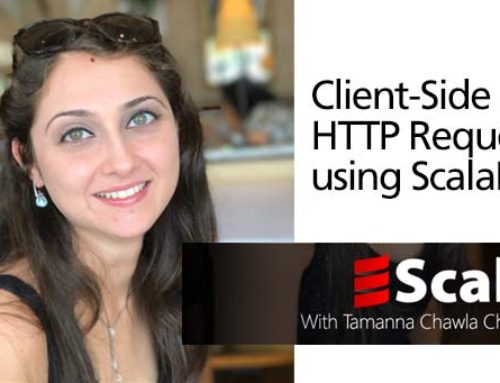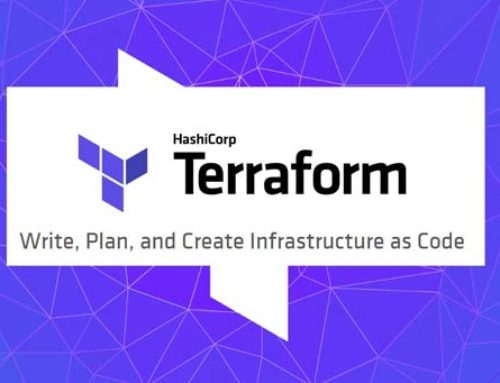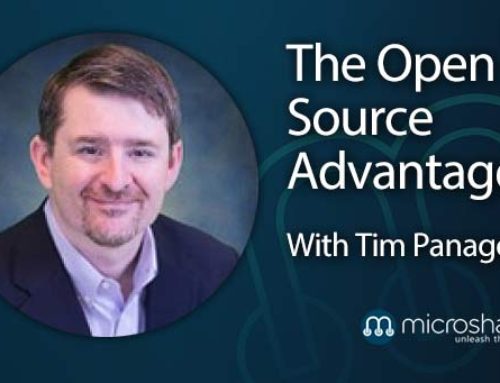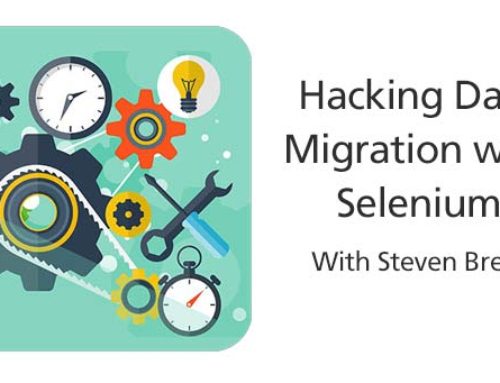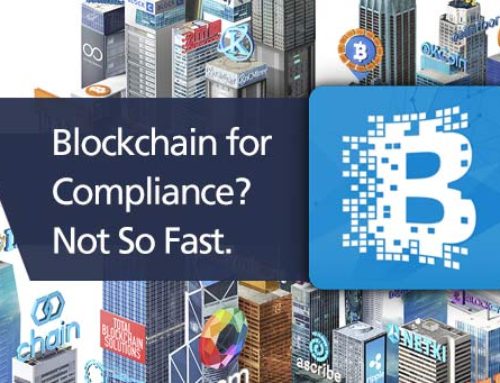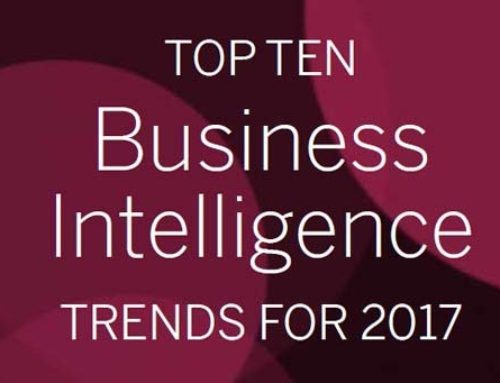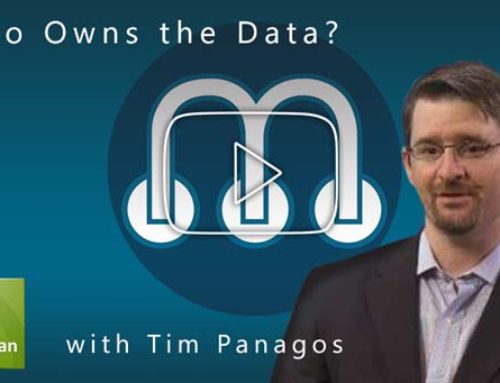Transcript: Ron Rock on The Practical Futurist Podcast on the Future of Smart Technologies, IoT and Data Ownership
Host: Andrew Gill
Guest: Ron Rock, CEO and Co-Founder, Microshare, Inc.
Andrew Grill (AG) [00:00:03] Welcome to the Practical Futurist podcast, a biweekly show all about the near-term future with practical advice from a range of global experts. To help you stay ahead of the curve, every episode answers the question What’s the future of. With voices and opinions that need to be heard. Your host is international keynote speaker and practical futurist Andrew Grill.
[00:00:29] Welcome to Season 2, Episode 3 of the Practical Futures podcast. My guest today is Ron Rock, who is the co-founder and CEO of Microshare Inc. Ron brings three decades of experience as a bridge builder between new technology strategies and legacy enterprises. He was most recently the founder and CEO of Knowledge Rules, an international business process management technology company that was sold to Accenture in 2010. Born and raised in Philadelphia, Ron is set as a director on both public and private boards, and he earned a Bachelor of Science in accounting from LaSalle University in Philadelphia, P.A.. He has deep ties to the technology and venture capital sectors in the United States and Europe and is active in philanthropic pursuits in his native city. Welcome, Ron.
Ron Rock (RR) [00:01:11] Thank you, Andrew.
AG [00:01:13] Now, before we go into this topic, it’s probably worth hearing your own definition of the Internet of Things. Alrighty. I think it means many things to many people. How do you describe it?
RR [00:01:23] Wow. What a heavy question to start our conversation with today! You’re right. IoT means a lot of things to a lot of people. And I’ve actually learned in the last six months that some middle management in large corporations advise me to not mention IoT in the C-suite because it’s got this bad reputation. IoT was first coined back in 1999 at M.I.T. and the idea was that we had computers running browsers and they were all talking to one another. It was the height of the first wave of dot.com and somebody came up with this great idea that, wow, what if machines could actually talk to each other directly? What if our refrigerator and our car and our appliances at home? What if all these things could actually be interconnected? What if cars and traffic lights and ambulances were all connected? So this was a big idea. What happened in the subsequent two decades? A lot of money was spent on IoT and frankly, a lot of failed projects. And so through that, the buzz came through IoT. Everything’s going to talk to everything to suddenly it became a bad thing to talk about in the C-suite. There were a few exceptions, things like the General Electric’s jet engine project. They were able to put very expensive sensors in that engine. It generates over 100 megabytes of data a second. But the ROI there made sense. We’re going to keep planes in the air. So no matter what the expense, it made sense. But we never really saw IoT in its vision of the 2000s and a George Jetson era. We never saw all that automation come together.
AG [00:02:57] So I agree that IoT has got a bad rap and I’m also not using that term because what is confusing and also the other thing and we might talk about this. People then say all IoT, my Internet camera at home that’s been hacked and the Internet of Things has just has a really bad connotation. So I know you now talk about Microshare as a Sensing-as-a-Service company. That’s a much more compelling view. But what does it actually mean?
RR [00:03:19] Well, and if I can do a precursor to that, I’d like to say we talk about IoT under this concept of digital twinning. Digital Twin has a lot of definitions out in the marketplace as well. At the highest level, digital twinning is “we’re going to create a virtual replica of everything in our physical lives.” Why are we going to do this? We’re gonna do it to drive operational efficiencies. We’re gonna do it to extend the quality of life. We’re gonna do it define new business opportunities in the marketplace. I say extend the quality of life because data in general has gotten a bad rap lately. And so just like you’re teeing up the question, hacking our cameras, TIME magazine tries to scare the hell out of us every week with our baby monitor has been hacked and it’s watching little Jack. So what we don’t talk about and the press doesn’t talk a lot about is all the good things coming out of data. So cars that don’t get into accidents in the first place are happening because of thousands of sensors talking to one another and proactively making our automobiles safer, proactively driving our health care system to look for cures to cancer, improve cardiac care. All these types of things are benefits of data, but we take those for granted and we try to scare everybody with data must be bad. So I think one of the first things we tackle at Microshare is the idea that there’s a lot of really good data out there. And the more data we can collect, the more efficient we’re going to be able to make operations, the more we’re going to be able to create new business opportunities, new insights. And let’s face it, the companies that run in a data centric business model are the companies that are now the most valuable in the world. And legacy companies that have been around a long time are struggling and need to make that switch or risk going away.
AG [00:05:13] So I agree with you, data is so powerful, but there’s so much out there. Let’s make it more personal for our listeners. What sort of data can you collect if you’ve got these sensors out to give us a sense of what is the data we can collect and how that might be turned into insights?
RR [00:05:25] Sure. So at my. Share there’s so many different industries that we could have pursued as an early stage company, we decided to focus on commercial real estate and we picked commercial real estate for a few reasons. One, is it’s not overly regulated. Two, everybody has some commercial real estate. It’s ubiquitous across the planet and it’s typically been underserved from a financial and technology investment perspective. So why do people care about data in commercial real estate? Well, if I’m the tenant, I want to know how many people are in my room, in my building. Increasingly, we’re now working with a group of investors here in the U.K. They lend the money to build the skyscraper. And so I’m going to give you 100 hundred million dollars, but I’m going to build into the covenant of the bonds that I get to see the data of the occupancy in that building whenever I want.
AG [00:06:18] So now data has real monetary value, absolute monetary value.
RR [00:06:22] And why do I do that? Because I want to know that my tenant is potentially going to go away nine months before they typically would tell me, because I’m watching real time how that building functions. So the money people are interested. The landlord is interested. The tenant is interested. And the real low hanging fruit that we have found is that the facilities management folks, the people that clean that building are really interested in that data. Why? Typically, large companies like here in London, Carillion went out of business. These were big companies, quote unquote, “Too Big to Fail.” Billions of pounds running on razor thin margins on a race to zero. What does a company like Carillion do? Among other things, they clean your office space. How do they typically clean it? They have minimum wage employees pushing a cart from point A to point B to point C every day on a schedule, regardless of utilization. So what if I could actually clean space that’s being used and not clean space that isn’t being used? Fun little fact. The number one complaint in North America and Europe in the workplace is dirty bathrooms. And so suddenly I start cleaning the bathrooms that are being utilized more frequently and I stop cleaning the bathrooms that, for whatever reason, time of year, time of day, are no longer being used. So one of our large global facilities management companies, a Fortune 100 company, we were in a meeting a few months ago and they said, wait a minute, Ron, I think I get it. Occupancy equals dust. Not to mention germs. And that is a fundamental game changer. So now you’re in a razor thin margin business, huge big global footprint. If I can suddenly shave a few points off of my cost whilst at the same time improving the level of service, that’s a huge win for these companies comes back to a wellness thing.
AG [00:08:20] So we hear that millennials want to come to work and be inspired and make their passion. But if they’re working in a facility they don’t like or its duty, then they’re not going to be happy. And I know that if I go to a bathroom facility, there’s a piece of paper that someone signed saying they’ve been there, but that routine is programmed every hour they go there, whether it needs cleaning or not. So it just to break it down, the sense of basically says this space, this bathroom, this coffee area is or isn’t being used. And so that data goes back to someone who can then take action on it.
RR [00:08:50] That’s right. And typically, those sensors in that data create insights, those insights are integrated in with your Dynamics 365 accounting system or your PegaSystems business process management – BPM system – or S.A.P. And these insights then drive action. So, for example, being in a bathroom and having a pushbutton sensor there that allows a consumer to say, hey, this bathroom needs to be cleaned, I now have a date time stamp of when they push that button. It needs to be cleaned when the cleaning person shows up. They have a small magnet on their keychain. They tap the bottom of that sensor. And I now have a date time stamp as to when the response showed up. As we look at some of these big global facilities management contracts, the margins are so thin that they’ve begun crafting service level agreements. And so now the facilities management company can actually get an increase in revenue if they meet certain service level agreements. We now provide the data that shows real time feedback from the people using the building and the facilities management companies, real time response as to how they are servicing the facilities that they’re engaged with.
AG [00:10:04] So if you break that down, the way you do that today is a supervisor. We have to go around with a clipboard and actually look at the piece of paper to save it to being clean, which means another person essentially just looking at data that’s already there. So give me a sense of how you get the data back from a sensor in a bathroom into someone’s dashboard, giving you a sense of how I see the whole sort of data flow happens.
RR [00:10:24] So that’s a great question, Andrew. And the world has changed so much. In the last 24 months, I talk to a lot of customers who have tried and failed expensive IoT projects. They want to beat themselves up a little bit and I try to talk them out of that. The kind of technology, the kind of data insights that we’re talking about didn’t exist 24 and 36 months ago. It’s brand new. So there’s really two things at play. First is companies like Amazon Web Services – AWS – and Microsoft Azure. They didn’t have fully robust IoT offerings just 24 months ago. So even if you were savvy enough to find the censors and figure out how to plug them in and program them, you still had a whole infrastructure that you needed to worry about.
[00:11:10] The second piece is a whole new body of sensors in what’s called LP-WAN, which are low power, wide area network sensors, the power thing is important.
AG [00:11:20] If you stick a sensor there, you don’t want to have to run power and cabling and ethernet to it. So it’s going to be standalone.
RR [00:11:26] You’ve been doing your homework?
AG [00:11:27] Absolutely. I’d like to think that as a futurist, I know what’s coming next year.
RR [00:11:30] Yeah, absolutely. That’s absolutely right, Andrew. The big breakthrough here is that we have sensors now that in many cases cost less than US$15 with a five-year battery life. And if those kinds of economics are going to put a sensor in every dog, cat, kid, manhole cover, soap dispenser, toilet seat, refrigerator, mouse trap, mouse trap, even a better mousetrap. So the question you asked was architecturally then, how does this work? We have this new generation of low power, wide area network sensors. We call it ‘Lick, Stick and Scan.’ You simply stick them on the wall. You scan them with apps that we’ve built it automatically digitally twins’ that sensor.
[00:12:11] So it gives that sensor all of the details around its location that you need to make the information meaningful. That sensor broadcasts as frequently as every second, as infrequently as once every 20 minutes. And it sends information. I’m occupied, I’m hot, I’m cold and wet. I’m moving any one of a series of basic pieces of information. That information gets transmitted wirelessly to a gateway. A gateway. Think about an analogy, the router that you have at home. So it’s a small box that’s plugged in. It has radio communications to all the sensors.
AG [00:12:52] But the important thing here, you don’t need the existing Wi-Fi is its own.
RR [00:12:56] That’s exactly right.
AG [00:12:57] So you’ve got I.T. people that would be the ones that would say, no, you can’t do that because you can’t connect to a corporate secure wireless network. And I think that the solution that you’ve gotten, you’re putting on the market doesn’t need I.T. involved. The Lick, Stick and Scan then connects to these gateways through proprietary unlicensed spectrum and you’re on your way. And you’d have to worry about getting on I.T. involved.
RR [00:13:17] That’s absolutely correct. As a mere fact, I like to say that most of my customers can’t spell IoT because that’s not what they bought. They bought occupancy, predictive cleaning, environmental monitoring, smart parking, space utilization optimization, their buying business solutions around business problems. The fact that we’re running an IoT network under the covers escapes them, and one of the key benefits is you don’t have to get I.T. involved. And that’s really, there’s a few benefits there. One is obviously that I.T. is always busy. It’s it creates a lot of overhead. But again, the press scares us about how people have hacked into legacy mainframe computers through security cameras and door sensors. Our data never touches your corporate data. The data goes to that gateway via a SIM card up into the cloud and into Azure. And by the time it gets into Microsoft Azure you’ve got all the power of Microsoft’s security and encryption data, sovereignty, storage, all of the features that a global cloud provider brings to the table. So from that point, if you want to start ingesting that data back into your corporation, back into your accounting systems, whatever it may be, you have the ability to do that, but you’re not being forced day one to marry that sensor data with your precious behind the firewall corporate data.
AG [00:14:48] You touch on a couple of things there. And I think the promise of IoT has been coming for a while. But we’re now at an inflection point. You talk about the four things that have kind of come together. You might like to expand on those.
RR [00:14:57] Sure. Why has IoT exploded in the last 24 months? Well, it’s a couple of things that we’ve already touched on. As you said, first, the back-end infrastructure wasn’t there. Azure, IBM, Watson, Google, to a lesser extent, AWS, they now all have basic IoT offerings. So you’ve got a place to store the data that’s kind of table stakes. You needed that to get started. The second thing is that you’ve got this growing catalog of off-the-shelf sensors. When we started in earnest tracking this LP-WAN Marketplace five years ago, there were three or four sensor manufacturers. There are now over 100. And success begets success. LoRaWAN is the fastest growing LP-WAN network in the world. LoRa is a long-range sensor. So this is the radio network that is the unlicensed spectrum that connects them all together.
RR [00:15:55] Correct. And was started by some tech guys and IBM and the LoRa Alliance now has over 500 members.
RR [00:16:01] And you guys, a key in that on show, which is import. One of my partners and a co-founder of Microshare, Charles Paumelle, is the chairman of the LoRa marketing committee. So you get to see the standards. So you’re all right up with what’s happening next. We get to see not only the sensors that are available today. We know what sensors are coming on the market in the next six to 12 to 18 months. And that’s really exciting to see all the innovation. But for example, Tata has flooded India with LoRa airwaves. Orange and Wigg have flooded France. Vodafone is working on Germany. British Telecom’s working here in the UK. Telstra, I think, in Australia have a solution as well. And Comcast is exploring doing it in the U.S. So that kind of success attracts innovation. So if you and I came up with a really cool sensor tomorrow and we said, OK, how are we gonna take it to market? We would look at Wi-Fi and Bluetooth and ZigBee and Ethernet and LoRa and we would probably pick LoRa. Why? Because we have the best chance of having customers wanting to buy our sensors today in that space.
RR [00:17:01] And the thing here is it’s the long range and also low power, because as you say, if you’ve got a sensor stuck on the wall with a battery, these things last up to five years. I don’t know any device I’ve got that has five-year battery life and a clock will go flat. This is the key because as you say, it’s Lick, Stick and Scan if it’s up on a wall or under a desk or in a bathroom, the last thing you want is to have to go in and maintain and change the battery. So I think you’re right that the sensor technology has come forward in leaps and bounds. The cloud technology is there. This is why I think we’re at an inflection point.
RR [00:17:30] And there’s also in addition to the cloud technology, there’s a whole new management challenge. When I have 100,000 sensors in a building with 100,000 batteries and because they’re Lick, Stick and Scan, they’re easy to install. They’re also easy to walk away. So I have to put new kind of capabilities in place. And that’s one of the things my company Microshare has done. We talk about delivering digital twinning infrastructure at scale. It’s one thing to do 100 sensors in a building. It’s another to do a 100,000 on a campus. And so we’re solving for a lot of those problems and managing those sensors at scale. So getting back to the perfect storm of why do we see IoT exploding right now? We talked about infrastructure cloud. We talked about sensor availability through LP-WAN. The third thing we’ve touched on a little bit earlier as well is failing business models. Looking at the way Carillion imploded, look at what happened with We Work recently. A lot of legacy businesses have been talking about innovation for a long time. [Clayton] Christensen’s book, “The Innovator’s Dilemma,” innovating in legacy companies is hard. We’ve reached a point where you innovate or you go away. And that’s the reality facing these companies. So we’re seeing movement now in the C-suite where it’s no longer OK to sit on the sidelines and wait. And frankly, a lot of this change is also being driven by activist investors, private equity firms. So we’re watching this pressure and suddenly we see companies taking action who three years ago were happy to just stay on the sidelines, consume a lot of our time. People want to talk about this stuff, but now actually pulling out a checkbook and paying for it. We’re actually seeing that change now.
RR [00:19:14] And that leads me to the fourth component of the perfect storm. And you touched on it, Andrew, a little bit earlier. One is we have millennials coming into the workforce and they don’t demand they expect a very different kind of working environment because of the things like we work. Funky new space.
AG [00:19:33] For our listeners, who don’t know that we’re sitting at a We Work right now in one of the offices. Yeah. And it’s really cool. You’ve got the exposed ceilings; you’ve got the hardwood floors. Are these sensors we’re looking up at locating where we are in the room? Sadly, no. Those sensors are just there to let us know if the room catches on fire. They need some they need some sensors here. They do need some sensors.
RR [00:20:03] We work is not all startups. We Work in Philadelphia was our home for a few years. And on one side of me was IBM. And the other side of me was Comcast. So even large organizations are coming into this new funky space. Well, if you’re gonna have space like this, you have to have sensors understanding how it’s living and breathing and being utilized to figure out how to optimize the space.
AG [00:20:27] One thing each one of your guys was talking to me about was carbon dioxide sensors. It makes a lot of sense. If they a lot of people in the room breathing out CO2, you get really sleepy if you’re sleepy and not productive.
RR [00:20:38] So this becomes a wellness discussion, not just a sensor discussion. And if asked, “Do you want happy, productive employees?” He or she is going to say “yes!” If you reverse engineer that carbon dioxide sensor so it could tell you what the space is like and whether you’ve got an issue with carbon dioxide, for example, we had a client with eight hundred employees on a floor, and by 11 o’clock every day they were legally drunk because of CO2. They were shocked, shocked to find this – it was staggering. And think about it, these people are walking around making very serious decisions about how to drive that business.
AG [00:21:12] So without the data, they don’t know there’s a problem and that they introduce ventilation or they reduce the density. They didn’t solve a problem. People are more productive. They make more money. That’s right. Why aren’t people buying more?
RR [00:21:23] Well, and they are. That’s what we talk about, the perfect storm. And the last piece on that’s on that perfect storm is sustainability and ESG [Environment, Social, Governance]. It has become the topic in C-suite. It was the topic in Davos this year Marc Benioff, the CEO of Salesforce, made the bold statement that capitalism as we know it is dead. Of course, that’s a great attention-grabbing headline. But when you read it, what it means is that corporations used to define their singular purpose as driving shareholder value. It’s now about people and planet and shareholder value. You can’t reduce your carbon footprint if you don’t have the data in the first place of how your building is behaving, living and breathing.
AG [00:22:08] One other really interesting use case is asset tracking. Could you talk us through what that might entail and how it’s helped solve problems?
[00:22:15] Sure. So. So that’s another breakthrough in the industry. One of our investors is a company called Kerlink. They are publicly traded on the French market. And we talk about IoT technology and LoRa. Every gateway that is being deployed in an industrial scale is manufactured by Kerlink. They’ve invested in us as well. We’ve been solid partners for a number of years and they together with us, started looking at indoor asset tracking. Why do we care? Royal Post has 75,0000 carts they need to track across all of the UK.
Take hospital beds. Turns out your relationship with your hospital bed is more important than your relationship with your room. I use your hospital bed to transport you to pathology. Physical bed. Yes, exactly. And so depending on the sickness that you have. There are protocols how that hospital bed needs to be recycled before it gets redeployed. I don’t know. I may send the recycling team into your room, but your bed was left down in, you know, in heart surgery. So tracking beds, tracking wheelchairs. I can’t discharge a patient in any hospital in the United States or in the UK without taking you out in a wheelchair. If I’ve got available beds, I can’t bring a patient in until you’re discharged. Guess what people do at hospitals? They hoard wheelchairs. They hide them. Turns out maternity is one of the worst culprits of this. So now we’re simply tracking where all the wheelchairs are. There’s another added benefit you’re pulling up to the hospital with your pregnant wife. And which entrance has wheelchairs available? So now I can make that information available on an app. So we’re doing indoor asset tracking with wheelchairs, hospital beds and infusion machines to start with.
And this is a combination of Bluetooth and LP-WAN technology. Again, something that economically wasn’t feasible in this case even 12 months ago. The competition was products like RFID, very expensive to install a cable in together and everything. Exactly. Tear walls open, all that type of stuff. Just like the easy Lick, Stick and Scan sensors, the asset tracking solution is also a very low cost, easy to install. So we’re actually talking to clients now that have over a million assets that they’re trying to track across warehouses and trucks. So we think that indoor asset tracking is going to be a killer use case.
Another vertical that express a lot of interest is the pharmaceutical industry, lots of expensive equipment, lots of interesting drugs in various degrees of preparation being transported in special containers all around these campuses. So being able to track where those things are is really important.
AG [00:25:12] So what’s the future of IoT? Maybe you could share some predictions from where you sit about what will happen next. Is it winning the sensor races? Is the data? Where do you think the innovations will come in this industry?
RR [00:25:24] Oh, that’s a great question. I think it’s going to take a little bit of time. Where we are right now is we’re going to leverage these low power sensors and we’re going to put sensors on everything. And I we talked about indoor asset tracking. Outdoor asset tracking is right behind it. Once we have countries covered with this low power, wide area radio waves, we’ll be able to put a simple tag on spot or fluffy. And wherever our cats or dogs go, we’ll be able to find them with our phone. Eventually we’ll see sensors on a golf ball. So you’re no longer hacking through the golf course, as I am frequently looking well off of the trail form for my golf balls.
RR [00:26:06] So I think we’re going to see a lot of sensors. I think we’re going to see automobiles increasingly being able to talk to one another. I think we’re going to see an explosion in wearables. I’m working with a client right now in the UK. Imagine you paying a company 19 pounds a month. And you’ve got sensors in your Thomas Pink shirt and your nice shoes and you and your sports coat. And all of a sudden one day you get a push notification. It says, Hey, Andrew, you better go to the hospital. We’re tracking a hundred thousand men just like you. Your height, your weight, your activity level, your age. Every time one of them has a stroke, their data looks just like yours the day before. What’s better than rapid treatment for a stroke? Not having the stroke in the first place. So we’re going to just like we’ve done with airbags versus sensors in cars, airbags. We’re all about saving your life after the accident. The technology now is all focused on let’s not have an accident the first place. So it all this idea of predictive becomes a theme, whether it be predictive cleaning and bathrooms or whether become predictive healthcare, predictive automobile, transportation. So I think that there’s going to be a whole lot of synergy created with all of these things talking together.
Increasingly, we’re not consumers and employees and citizens. We’re simply an individual that traverses through homework, the places we live, the places we travel, where we’re just one entity and we’re one entity creating lots of data and consuming lots of data. So I think the future of IoT is bringing all that data together. And I’ll come back to the really important point: to improve the quality of life. Will there be bad things that happen? Yes. Will nefarious people take advantage of it? Yes. But just because there is fraud with payments doesn’t mean we’ve stopped using credit cards or Apple Pay or Google Pay. We figure out a way to contain the nefarious behavior, bake it into the business model and the economics. Why? Because the good far outweighs the bad.
AG [00:28:16] Final question. And I’m a big believer in this. This whole issue of the data, I talk all the time about my wearable. I’ve got a Fitbit. I wish I could share that data with my GP. In between my visits and when you talk about my clothing having a bit of data in it, I would much rather want to know if I have a health episode coming up than after it. But who owns the data? So I’d like to know that. I’d like my physician to know that, I may not like my health insurer, to know that if all these data is around, some of it is physically on my person because I’m wearing the devices where I know it or not, who owns the data and who should own the data.
RR [00:28:49] That’s a great question. And I think that that will be a debate and a conversation for the next couple decades to come. Because first of all, most people aren’t aware of data other than, again, being scared by the nefarious things that are happening and not being educated, all the positive. I think the one simple answer is that you own the data. The question is, who is you? When you swipe that credit card, you own that data. But so does the merchant. Your bank owns that data as well because they just funded the transaction. The merchant’s bank owns that data because they just received the money for that transaction. And of course, globally, whether it be Visa, MasterCard, Swift, American Express, they own the data. People talk about health care. And now that’s your data. But it’s also your doctors and your doctor have to fill out forms every year to be certified and get insurance premiums. And so they need to talk about their performance as a doctor. The hospitals need that data to make the entire experience better. So there’s a concept called multi-party data ownership. And when you really start to think about multiple, when you start to think about data as much as I do and yeah, that’s pretty boring. You find that I can’t think of a single piece of data that doesn’t subject itself to multi-party data ownership. It’s complex. There’s another piece of the conversation that makes it even more interesting, and that is the concept of data models. So thanks to GDPR or anyone of us can demand from Facebook that they send us all of our data and they will do that and they’ll send you a bunch of files and you look at it and you’ll find it mildly interesting, but you’ll say, well, wait a minute, though. This doesn’t tell me why you keep trying to sell me a Tesla. Every time I’m on my smartphone, my laptop, every time I walk by one of these dynamic billboards in London. Why does it always make me a candidate for a Tesla? And Facebook will say, I don’t have to give you that. That’s not your data. That’s my data model. That’s my IP. So we’re going first, I think, start to have a conversation about multi-party data ownership. I think the next evolution of this conversation is going to be around data versus data models. And I think increasingly we’re going to have lots of heated conversation about it because the data is worth something and there’s money involved.
AG [00:31:13] Okay. My pet topic here, I’ve got to ask this before we in the podcast. It’s the value exchange. So I believe at the moment, yes, with Facebook, it is a one-way transaction. You won’t be on Facebook or not accept decline. To your point, there’s all these data there in the data modeling and they own you. And my favorite expression is if the product is free, the product is me. I think you and I know because we’re empowered consumers that our data has value. In fact, I’ll put a price on my data in London. What I do, where I go, what I buy is with five to ten thousand pounds a year. I’d like a piece of that. I don’t like a piece of that in a discount. Some cryptocurrency money, whatever. But I think there’s going to be a value exchange. And the Australian government did a big report on the power of both Facebook and Google and the fact that they have ultimate power. Do you think over the next five years consumers will become more empowered and they’ll say, I want an exchange visit, I want it to be free, but I see the value in my data and where I do go and what I’m doing? But I want to have more of a relative relationship where I get some of my value back for this data.
RR [00:32:14] I do think it’s going to evolve. It may take more than five years. It’s very complicated. But for example, I’m working with a company here in the UK that measures the power coming into each apartment and they put this sensor on your inbound power line to drive efficiency. But they found out that they also could determine when you’re running your vacuum cleaner, when you’re making your tea, when your refrigerator was kicking on. Then through more machine learning, they figured out that they could predict that your appliances were going to go bad. So they suddenly had all the data and they said, well, “who wants the data?” Well, the manufacturers of your refrigerator, they would love it. The local repair shops would love that data. The utility company wants that data. And they went out and they started finding buyers for the data. They decided to go back to the tenants and say, we’re going to share this data with you. And so suddenly everybody was like, hey, that’s great. So they started out with a 70-pound electric bill. The technology brought them down to 60 now with the revenue share, brings them down to 45. And everybody’s more than happy to share that data. So we do think my partners and I have talked a lot about this. You can find some interesting white papers about this on my Web site, www.microshare.io, that this idea of multi-party data ownership and the idea of global data mart and the data will in fact be shared exchanged for value. We as consumers 24 hours a day, we produce data. People do care about your sleep patterns. People do care about your snoring. People do care. Even when you are traveling or working, how are you functioning as a human being? Where are you looking? What are you buying? What are you consuming? How many calories are you burning? And all of this data put in the right hands with the right purpose can radically improve the quality of life along the way. There’ll be some bad people that do things and we’ll have to figure that out along the way.
AG [00:34:08] I totally agree. So as this is the practical futurist podcast, I want to see if we can leave our listeners with three things they can do this week to understand more about the opportunity for the incentive things.
RR [00:34:19] Three things. So I think the first thing is just go online to Amazon and look at any of the wireless devices that you can put around your home. Look at the clever camera operated doorbells, the camera operated security systems, the smart thermostats, the intelligent outlet devices to control things in your home. It’s a start. Yes. You’re gonna get lots of interesting new apps on your phone. And yeah, it’s a little bit harder to figure out how to make it all work than it should be. But it certainly is going to broaden how you think about how much carbon footprint you’re creating, how your home is functioning. What kind of power consumption you’re doing, what your kids may or may not be doing while you’re not around? So there’s a whole benefit to that.
The second thing I would encourage people to do. Andrew, you’re already doing it. I do it with an iWatch. It’s really cool to have a Fitbit or to start tracking how many steps you take a day. Start tracking your heart rate, your resting heart rate, you know, all those types of things. I think that’s just, again, gives you firsthand view where you can then see your own data.
And the third thing I would challenge people to do is start thinking about all the positive uses of data. Start broadening your education of data and ask yourself whether it be data coming out of that nest thermostat or data coming out of your new Tesla or data coming out of that Fitbit. Ask yourself who really owns this data and begin thinking about it. There’s no clear answer. And by the way, there’s also no wrong answers, as best as I can tell. But it’s those kinds of exercises I think help people today start taking a step into the future tomorrow.
AG [00:36:06] Yeah. As I say, if you want to get digital, you’ve got to be digital. Stop playing with it. Then it becomes really, Aha! That’s why Fitbit even has a Fitbit. I’ve really enjoyed the discussion. How can people find out more about you, contact you, find out more about my crochet so you can find me on LinkedIn.
RR [00:36:20] It’s Ronald Rock. @rrockrr on Twitter. You can find out about Microshare at www.microshare.io. I encourage folks to look through all of the offerings, but also if you want some good reading. Check out the white papers and our thought leadership section. We touch on not just how to get started in the next 30 days, but really trends that we see happening over the next three to five years.
AG [00:36:42] Thanks, Ron. I’ve really enjoyed discussion. Thanks so much for your time.
RR [00:36:45] Thank you, Andrew it’s been a lot of fun.
AG [00:36:47] Thank you for listening to the Practical Futurist podcast. You can find all of our previous shows on our website, https://andrew.london/podcast/. And if you like what you’ve heard on this show, please consider subscribing via your favorite podcast app so you never miss an episode. Until next time, this has been the Practical Futurist Podcast.


